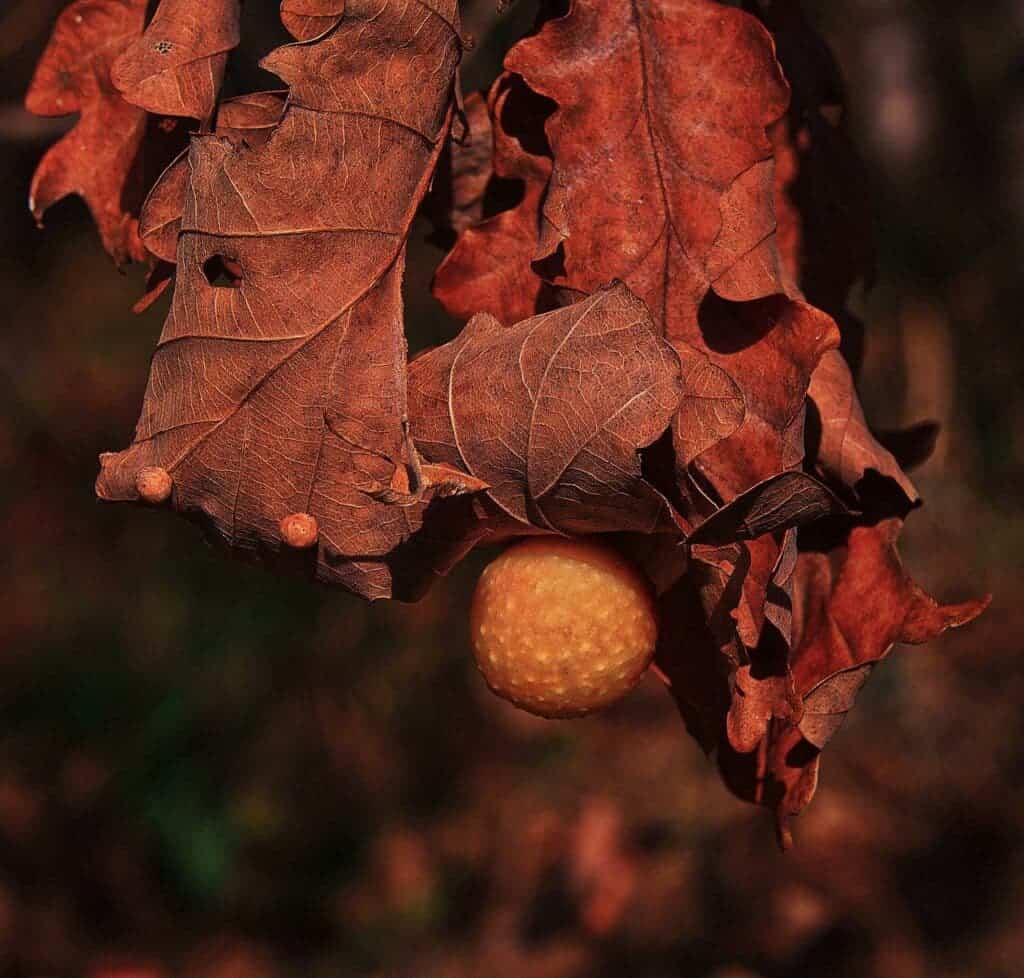A chance discovery by a professor’s son reveals a surprisingly complex interaction between plants and insects.

Two years ago, an 8-year-old Hugo Deans, the son of Penn State professor of entomology Andrew Deans, found a handful of round, wooden beads near an ant nest in his backyard. He “thought they were seeds,” and went to show them to his father, surprised by the discovery that ants would collect and eat seeds. Instead, the professor told Hugo that they were oak galls — and, in time, this would lead to the discovery of a unique interaction between insects and plants.
Although many plant-insect interactions are well documented by this point, it seems that there is more to understand — and that not all our knowledge is correct. The current paper describes a type of myrmecochory, the dispersal of seeds by ants, wherein wasps, oaks, and ants form a multilayered and intricate system that all works in the favor of wasp larvae.
Cunning plan
“In myrmecochory, ants get a little bit of nutrition when they eat the elaiosomes, and the plants get their seeds dispersed to an enemy-free space,” Prof. Deans explains. “The phenomenon was first documented over 100 years ago and is commonly taught to biology students as an example of a plant-insect interaction.”
“Cynipid” wasps reproduction involves coaxing oak trees to grow galls (round, woody growths) around their larvae as a means of protecting their offspring while they develop. The paper also explains that certain plants such as bloodroot, a wildflower native to North America, produce edible appendages on their seeds to attract ants. These growths are known as elaiosomes, and their role is to entice ants to carry the seeds back to their nests, which helps the plant disperse future generations.
Although these behaviors seem unrelated on the face of it, the paper proposes that they are, in fact, deeply related.
“First, we observed that, while these galls normally contain a fleshy pale-pink ‘cap,’ the galls near the ant nest did not have these caps, suggesting that maybe they were eaten by the ants,” says Prof. Deans. “Ultimately, this led us to discover that gall wasps are manipulating oaks to produce galls, and then taking another step and manipulating ants to retrieve the galls to their nests, where the wasp larvae may be protected from gall predators or receive other benefits. This multi-layered interaction is mind blowing; it’s almost hard to wrap your mind around it.”
For the study, the team carried out a series of field and laboratory experiments. Their first step was to determine whether oak gall caps, which they named kapéllos (Greek for “cap”), were edible and attractive to ants like elaiosomes. For this, they observed ants interacting with oak galls in Western New York and central Pennsylvania both directly and through video recordings. Both of these showed ants transporting galls to their nests, where the edible caps were removed while the galls themselves remained intact.
Secondly, they wanted to determine whether kapéllos functioned similarly to elaiosomes. For this step, they investigated whether ants would prefer oak galls over bloodroot seeds by setting stations containing both near ant colonies. The insects removed the same numbers of each, suggesting that they had no preference one way or another.
But why did the ants collect these kapéllos? The team hypothesized that they evolved to be highly nutritious to attract the insects, so the team set up three petri dishes for ants to choose from. One of these contained entire galls, another contained gall bodies with kapéllos removed, while the third one contained only kapéllos. Upon introducing ants to these petri dishes, the team found that the insects were equally interested in the control galls and those without kapéllos, but they showed greater interest in galls with intact kapéllos and for kapéllos alone than controls.
In order to determine why these kapéllos attract ants, in particular, the team compared their chemical make-up with that of elaiosomes. They report that both contain healthy fatty acids in large quantities, which they say mimics the chemical contents of dead insects.
“We showed that galls with caps were far more attractive to ants than galls without caps and that the caps by themselves were also attractive to the ants,” says John Tooker, professor of entomology at Penn State and co-author of the paper. “This suggested that the caps must have evolved as a way to entice ants.”
“Ants are scavengers that are out trying to find and grab anything that’s suitable to bring back to their colony, so it’s not an accident that the gall caps and the elaiosomes both have fatty acids typical of dead insects.”
The findings shed light on a particularly intricate system in which wasps interact with oaks, who, in turn, interact with ants, to carry oak galls into ant colonies. Since the ants only consume the kapéllos, wasp larvae in the galls remain undisturbed and enjoy the added protection of being underground and defended by unknowing ants.
Exactly how this system came to be, which part evolved first, is not yet clear. But the team believes that it was this interaction between oaks and ants that led to the rise of myrmecochorous plants like bloodroots. Such species make up only a small part of the plant kingdom, whereas oak galls are abundant — so abundant, in fact, that they were once used as animal fodder.
“If these galls were so abundant and evolved this tactic of growing this cap thousands of years ago, that could have been a strong driver of natural selection in ants,” says Prof. Warren. “It could be that ants were long used to picking up galls with caps, and then when spring wildflowers began to produce seeds that happened to have an edible appendage, ants were already predisposed to picking up things with a fatty acid appendage.”
The paper “Oak Galls Exhibit Ant Dispersal Convergent with Myrmecochorous Seeds” has been published in the journal American Naturalist.


